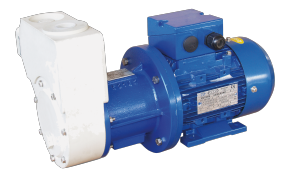How to maintain turbine pumps
Regular Inspection and Monitoring
Visual and Operational Checks
-
Inspect for leaks around seals, column pipe joints, and discharge heads.
-
Monitor vibration and noise: Excessive vibration often indicates imbalance, bearing wear, or misalignment.
-
Check bearing temperatures: Elevated temperatures can signal inadequate lubrication or bearing degradation.
-
Observe pressure and flow readings: Sudden deviations from normal operating curves can reveal impeller wear, clogging, or suction issues.
Performance Trending
-
Record discharge pressure, flow rate, and motor load routinely.
-
Compare against the pump’s design curve to identify early signs of efficiency loss.
-
Use vibration analysis or condition-monitoring tools to detect developing mechanical faults.
Lubrication and Bearing Care
-
Line shaft bearings in deep-well turbine pumps are usually water- or oil-lubricated.
-
Maintain clean, adequate lubricant supply to prevent metal-to-metal contact.
-
For oil-lubricated units, check oil levels and condition regularly; replace degraded oil promptly.
-
-
Ensure thrust bearings in the discharge head are properly greased and aligned with the motor shaft.
-
Avoid contamination—fine particles or water ingress can severely shorten bearing life.
Shaft and Coupling Alignment
-
Misalignment between the driver (motor or engine) and the pump shaft causes vibration, bearing stress, and seal wear.
-
After installation, thermal cycling, or major maintenance, always check and re-align shafts using precision tools.
-
Inspect couplings for wear, cracks, and correct key placement. Replace flexible elements as recommended.
Impeller and Bowl Assembly Maintenance
-
Periodically inspect impellers for erosion, corrosion, and buildup of solids or scaling.
-
Maintain proper impeller clearances to preserve hydraulic efficiency.
-
Check the bowl wear rings and replace if clearances exceed manufacturer limits.
-
In abrasive or sandy service, use hardened materials and schedule more frequent inspections.
Column Pipe and Shafting
-
Inspect column bearings and shaft sleeves for scoring or wear.
-
Ensure each shaft section is straight, properly coupled, and balanced.
-
Replace worn shaft sleeves to prevent bearing damage and leakage along the column.
Mechanical Seals and Packing
-
If the pump uses packing glands, adjust them to allow a minimal, controlled leak for lubrication.
-
Replace packing when leakage increases beyond normal or when grooves appear on the shaft sleeve.
-
For mechanical seals, inspect faces for scoring or cracks and verify correct spring compression.
-
Always use compatible seal materials for the pumped fluid and temperature.
Suction and Discharge System
-
Keep suction strainers or intake screens clean to maintain unrestricted flow.
-
Periodically check for air leaks or vortex formation at the suction bell; these can cause cavitation.
-
Confirm that discharge valves, check valves, and piping supports are tight and free of vibration.
Scheduled Overhaul
-
Follow a preventive maintenance schedule rather than waiting for failure.
-
During major overhauls:
-
Disassemble, clean, and inspect all rotating and stationary parts.
-
Replace bearings, seals, and wear rings.
-
Check shaft straightness and impeller balance.
-
Verify casing and bowl alignment before reassembly.
-
-
Record all measurements and clearances for future comparison.




